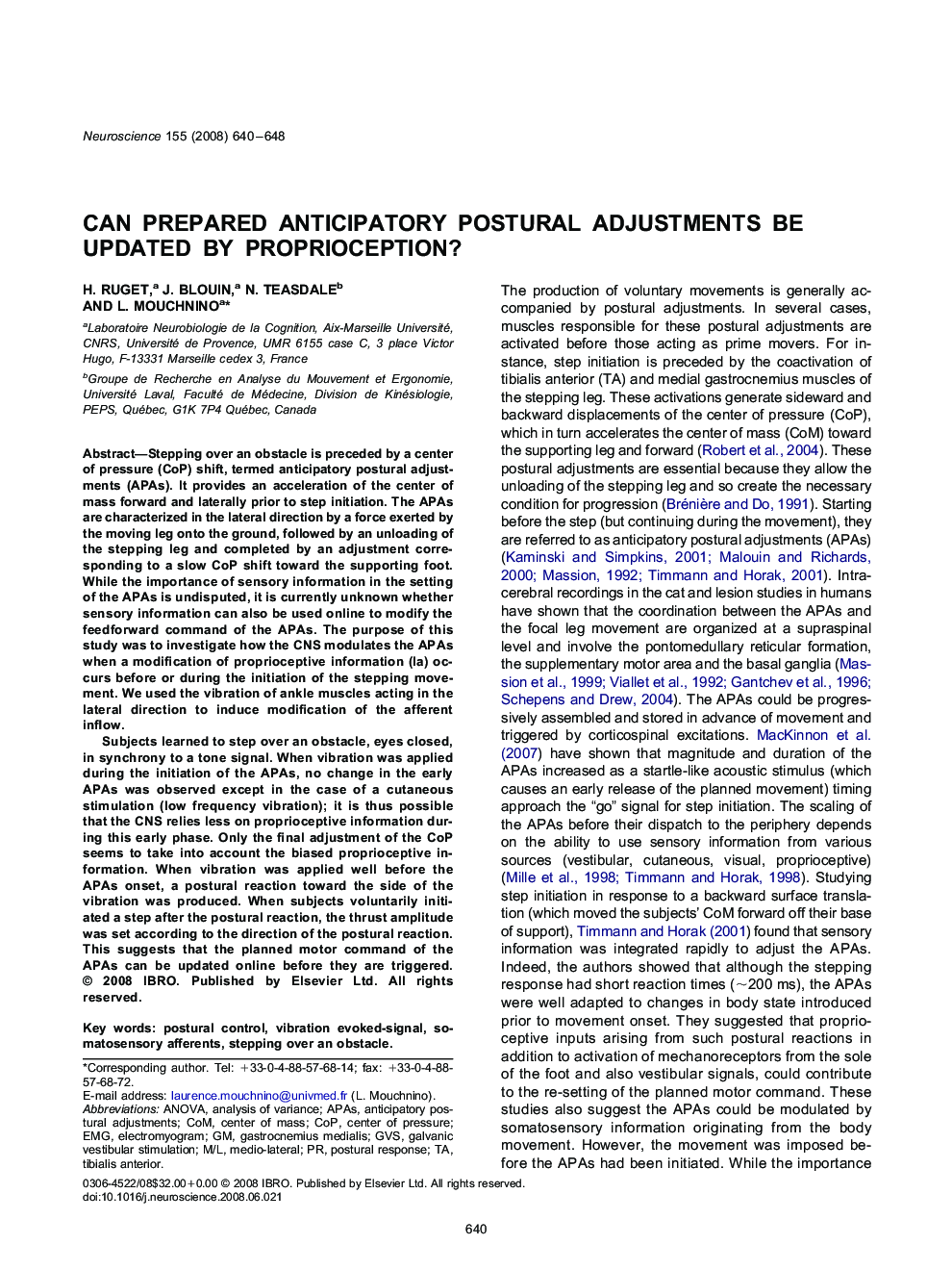| Article ID | Journal | Published Year | Pages | File Type |
|---|---|---|---|---|
| 4340717 | Neuroscience | 2008 | 9 Pages |
Stepping over an obstacle is preceded by a center of pressure (CoP) shift, termed anticipatory postural adjustments (APAs). It provides an acceleration of the center of mass forward and laterally prior to step initiation. The APAs are characterized in the lateral direction by a force exerted by the moving leg onto the ground, followed by an unloading of the stepping leg and completed by an adjustment corresponding to a slow CoP shift toward the supporting foot. While the importance of sensory information in the setting of the APAs is undisputed, it is currently unknown whether sensory information can also be used online to modify the feedforward command of the APAs. The purpose of this study was to investigate how the CNS modulates the APAs when a modification of proprioceptive information (Ia) occurs before or during the initiation of the stepping movement. We used the vibration of ankle muscles acting in the lateral direction to induce modification of the afferent inflow.Subjects learned to step over an obstacle, eyes closed, in synchrony to a tone signal. When vibration was applied during the initiation of the APAs, no change in the early APAs was observed except in the case of a cutaneous stimulation (low frequency vibration); it is thus possible that the CNS relies less on proprioceptive information during this early phase. Only the final adjustment of the CoP seems to take into account the biased proprioceptive information. When vibration was applied well before the APAs onset, a postural reaction toward the side of the vibration was produced. When subjects voluntarily initiated a step after the postural reaction, the thrust amplitude was set according to the direction of the postural reaction. This suggests that the planned motor command of the APAs can be updated online before they are triggered.
